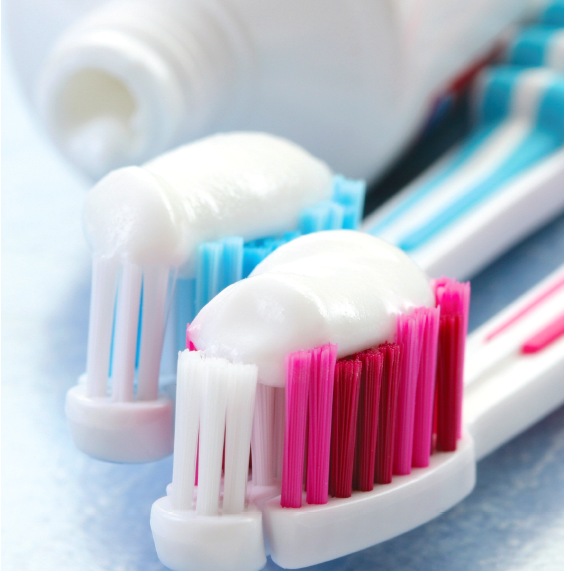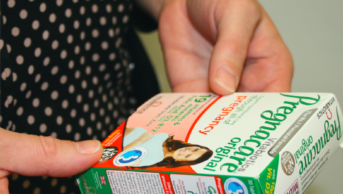
MONIKA ADAMCZYK | DREAMSTIME.COM
This content was published in 2013. We do not recommend that you take any clinical decisions based on this information without first ensuring you have checked the latest guidance.
Oral hygiene
Based on a substantial body of high quality evidence, toothpaste for routine family use should contain between 1,350 and 1,500ppm of fluoride. The exception to this is children under three years of age, who may use a lower fluoride toothpaste at 1,000ppm fluoride, found in some family and many childrens’ toothpastes. Very low fluoride toothpastes are no longer recommended and have largely been discontinued by manufacturers in response to research evidence.
Following brushing with a small amount of toothpaste — no more than a pea-sized amount of paste is recommended for children between three and six years of age, and a “smear” of paste for children under three — it is best to spit out the excess toothpaste and not to rinse with water. This avoids washing away the fluoride from the paste, leaving it in contact with the teeth for as long as possible.
Brushing is best done with a small-headed toothbrush having a compact angled arrangement of long and short round-ended filaments. The use of very soft or hard brushes should be avoided. There is some evidence that powered toothbrushes with an oscillating or rotating action, when used properly, may be more effective than manual toothbrushes. Whether a manual or electrical toothbrush is used, the head or brush should be replaced when the bristles of the brush become bent and splayed.
The approach to tooth brushing is important: this means having a systematic approach to brushing each surface of every tooth, as well as the adjacent gums. The junction between the tooth and the gum is a really important place to clean thoroughly. Individuals who have never received personalised tooth brushing instruction should be encouraged to ask their dentist to provide this when they next attend for an “oral health assessment”. (This is the new term for a thorough check up, when a dentist will ask lots of questions about the patient’s health and health behaviours, as well as examining his or her mouth).
Children should be supervised when brushing their teeth, especially if they have a tendency to use too much toothpaste and to swallow rather than spit out following brushing.
High fluoride toothpaste
High concentration fluoride toothpastes are a relatively recent innovation and come in two strengths. A moderately strong 2,800ppm sodium fluoride paste (eg, Duraphat 2,800) may be used by individuals aged 10 years and over, and a high strength 5,000ppm sodium fluoride paste may be prescribed for those aged 16 years and over.
These toothpastes should be used in the same way as a regular toothpaste. They are prescribed for individuals with high levels of tooth decay, or at high risk of developing dental caries. Such individuals may be unable to control, or modify, a highly cariogenic diet (ie, a diet including lots of fermentable sugars which are broken down by dental plaque).
Plaque is the white gelatinous material that forms on teeth when they are not cleaned effectively; it forms the acids responsible for softening the enamel in a manner that leads to dental caries. So why are some people at more risk of developing tooth decay?
Examples of risk factors include:
- Dentures that cover over caries-prone, retained roots of teeth (overdentures) or have had to be designed in such a way that they cover surfaces of remaining teeth vulnerable to caries attack
- Dry mouth (xerostomia), which can be caused by a large number of conditions, by medication, or following radiotherapy that has affected the function of the salivary glands
- Orthodontic treatment involving complex, fixed braces which make it difficult for a caries-prone individual to prevent new lesions of caries developing during several months of treatment.
A high concentration fluoride toothpaste may be prescribed for up to three months as part of a programme to help control active caries, or for longer in cases where there is an ongoing high risk of caries.
If used according to instructions and manufacturer’s directions, there should be no adverse effects with the use of a high fluoride content toothpaste, even when it forms a part of plaque control for an extended period.
People using high fluoride toothpastes should be advised to “spit don’t swallow” and not to drink for 30 minutes after brushing.
Tooth decay reversible
Tooth decay is not inevitable. If caught early enough, dental caries can be reversed. The use of a high fluoride toothpaste is just one of a series of possible measures taken to prevent, control, or possibly even arrest, the caries process in high caries risk individuals. Dentists may apply other high fluoride concentration formulations, such as varnishes and gels, in the management of patients with a high risk of caries.
A healthy diet is vitally important for good oral health, let alone general health. Use of a high concentration fluoride toothpaste will reduce, not counter the impact of a high sugar, cariogenic diet and those who have a high sugar diet and no other risk factors should be encouraged to analyse and modify their diets rather than use a high fluoride toothpaste to reduce the risk of tooth decay.
Sharing
High fluoride toothpastes should not be used by other members of a household. It is of particular importance that young children do not use a high fluoride paste so, like medicines, they should be kept it out of reach. This is because regular use of a high concentration fluoride toothpaste by a young child who swallows rather than spits out toothpaste after brushing may result in fluorosis, which in its mildest form presents as discrete mottling of enamel, but as brown staining and varying degrees of malformation of enamel in more severe forms.
If a young child manages to consume a large amount of high fluoride toothpaste, he or she should be encouraged to vomit and to drink lots of milk to reduce the absorption of fluoride. Urgent medical assistance should be sought.
Key points
• High concentration fluoride toothpaste may be prescribed for a small number of high caries risk individuals.
• Patients prescribed these toothpastes should not allow their toothpaste to be used by others, particularly young children.
You might also be interested in…
How to select the right mouthwash

Thalassaemia and iron supplements
